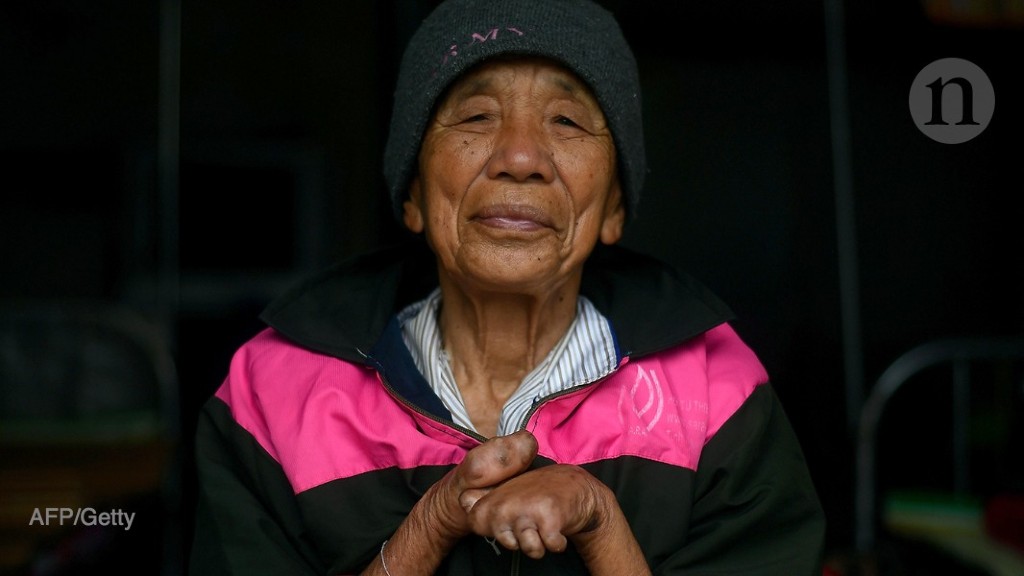Leprosy & Human Rights
The chronic illness of leprosy is an infection persisting from ancient Egypt to today. Though a cure exists, centuries of stigma and discrimination have marginalized leprosy patients and made it difficult to effectively treat and diagnose them. Legislation in India, England, and the US forced infected individuals away from their homes, their family, and their community. Religious practices further encouraged the exile of these persons and led to a curable disease becoming debilitating. Today, due to lack of early detection and cultural norms, infected individuals allow the curable disease to progress resulting in nerve damage and disfigurement. Organizations like the United Nations are dedicating themselves to end the stigma and eradicate the disease.
Related Groups
NGOs working on the issue
- International Federation of Anti-Leprosy Associations
- World Health Organization
Sources to Consult
- https://www.leprosy.org/get-involved/
- https://www.lepra.org.uk/volunteer
- http://www.leprosymission.org.uk/get-involved/
- http://risingstaroutreach.org/volunteer/dates–cost.php
- http://missiontothenations.com/Volunteer.html
Related Profiles
Ideas for helping out with the issue
Leprosy is a global disease. Other than the classic monetary donations, here’s how you, and your community, can get involved! Be aware many of these organizations are religious ones as leprosy is a disease strongly rooted in religion. There are many organ
Bradford, A. (2016, October 8). Leprosy: Causes, Symptoms & Treatment. Retrieved from livescience.com Basic information about the disease’s etiology and pathology.
U.S. National Library of Medicine (2015, September 10). Leprosy. Retrieved from medlineplus.gov Covers the immunological effects of the disease and goes more in depth into the pathology.
World Health Organization (2017, February). Leprosy. Retrieved from who.int Reviews the current stats on leprosy outbreaks and active infections. Outlines the WHO’s plan to eradicate and reduce the stigma of leprosy.
Comyns, J. (1762). Digest of the Laws of England. London, H. Woodfall and W. Strahan. Retrieved from heinonline.org A scanned copy of English Law from 1762.
“The Law Concerning Leprosy” (Leviticus 13, The New King James Version). Retrieved from biblegateway.com A typed up copy of the biblical foundation of leprosy.
Indian Law (1898, February 4). The Lepers Act of 1898. Retrieved from rfhha.org Copy of the original law passed discriminating against leprosy patients in 1898.
Indian Law (2016, May 6). The Repealing and Amending Act of 2016. Retrieved from indiacode.nic.in The outlined repeal of multiple Indian laws including The Lepers Act of 1898.
Greene, L. W. (1985 September). The Isolation of Hawai’i’s Leprosy Victims and Development of Kalaupapa Settlement, 1865 to the Present. Retrieved from nps.gov An in-depth review covering the history of the island and the patients. Included are maps and original letters/transcripts.
Aney, K. (2017, March 3). Beautiful Prison: Life on a remote Hawaiian leper colony. Retrieved from eastoregonian.com Lists the number of current leprosy patients living in the Hawaiian settlement by a reporter who took a tour.
Molokai Hawaii Visitor Guide (2017, July 8). About Molokai – The Kalaupapa Lepers and Saint/Father Damien. Retrieved from visitmolokai.com Organization based on the island and marketed to tourists covering the history of the Hawaiian settlement’s founder and cultural establishment.
Boeckl, C. M. (2011, May 11). Images of Leprosy: Disease, Religion, and Politics in European Art. Retrieved from ebookcentral.proquest.com An analytical book about European imagery of leprosy. Used for media content addition.
Davis, C. P., (Author) & Stöppler, M. C. (Publisher). (2017). Leprosy (Hansen’s Disease). Retrieved from http://www.medicinenet.com/leprosy/article.htm Diving into the topic of leprosy, Davis and Stöppler work to inform their readers about Hansen’s disease. They cover what it is, its history, its symptoms, diagnosis, and all you need and more to understand Hansen’s disease.
Brennert, A. (2004). Moloka’i. New York, NY: St. Martin’s Griffin. A fictional story that allows its audience to experience what a victim of leprosy had to live through back in the 1890’s. The protagonist is a young girl who is separated from her family and shipped off to Kalaupapa.
Leprosy Research Initiative (2015). Retrieved from leprosyresearch.org Working to eradicate leprosy, this organization gathers the brilliant minds of scientists all over the world to create joint study projects that work on early detection, nerve function impairment and reactions, inclusion, prevention, and strategies to interrupt transmission. One project that the Leprosy Research Initiative is currently working on uses a variety animal tissues to study the viability of mycobacterium leprae so that they can track the efficiency of different treatments to determine if a relapse will occur or if leprosy is permanently cured.
World Health Organization. (2012). Global Leprosy Situation, 2012. Weekly Epidemiological Record, 34. Retrieved from who.int Even in modern times, it is a problem, for in 2012 there 105 countries who reported cases of leprosy within their borders. While there have been improvements in curing leprosy, we can’t have a world without it until we learn to stop discriminating leprosy and give a voice to the currently voiceless.
White, N. (2010). In the Sanctuary of Outcasts: A Memoir. New York, NY: William Morrow Paperbacks. Neil White tells the tale of Carville, Louisiana, the place that housed both prisoners and leprosy victims. However, he sheds light on the cultural stigma by using a man who was sent to jail for committing fraud and found himself living next to the so-called “untouchables” until he realizes their value, dedicating his life to fight for their rights.
World Health Organization. (2016). Global leprosy update, 2015: time for action, accountability and inclusion. Weekly Epidemiological Record, 35. Retrieved from who.int As of 2015, there are a few countries that report the most amount of leprosy cases: India with 60% of the population, Brazil holding 13% of the population, and Indonesia contains 8% of the population.
Meima, A., van Veen, N. H., & Richardus, J. H. (2008, February 13). Future prevalence of WHO grade 2 impairment in relation to incidence trends in leprosy: an exploration. Retrieved from ncbi.nlm.nih.gov Even if we are able to eradicate leprosy within the next few years, those who won the battle against leprosy will need support, rather than judgment, as they may have lost some nerves or limbs in the process. Working to study the effects of leprosy throughout the years, three groups (cases before 1985, cases from 1985 to 2000, and cases from 2001 to 2020) were established to measure the number of people with leprosy and whether or not they became impaired.
Blok, D. J., de Matos, H. J., de Vlas, S. J., Richardus, J. H. (2016). Leprosy New Case Detection Trends and the Future Effect of Preventive Interventions in Pará State, Brazil: A Modeling Study. Plos Neglected Tropical Diseases, 10(3). Retrieved from europepmc.org With more than 30,000 cases of leprosy detected each year, Brazil is known for having the second largest population of leprosy victims. Interested in how leprosy will affect the future, a research experiment was conducted in an attempt to trace leprosy’s path with the idea of determining which year it will finally be eliminated.
Centers for Disease Control and Intervention. (2017). World Leprosy Day. Bust the Myth, Learn the Facts. Retrieved from https://www.cdc.gov/leprosy/ Hansen’s disease can be especially problematic in crowded countries with limited resources where it is either too far or too expensive to see a doctor. There is also social shame of having leprosy, so some people will avoid seeking medical attention which results in a later diagnosis and physical impairments. The shame of leprosy is even worse in countries where girls and women are treated as less than the male population, for they face double the discrimination. After only a few days of receiving treatment, a person affected by Hansen’s disease is no longer considered contagious; however, they must continue to be treated to ensure that they are free of leprosy. Treatment can last up to two years.
Cole, S. T., Eiglmeier, K., Parkhill, J., James, K. D., et al (2001). Massive gene decay in the leprosy bacillus. MacMillian Journals Ltd, 409(6823). Retrieved from searchproquest.com Despite the fact that leprosy has been around for years, it was taken to the microscope in the late 1800s. In an attempt to better understand it, scientists decided to compare leprosy’s genes to the genes of tuberculosis.
Kalesa. (2014). Leprosy. All Poetry. Retrieved on 10 September 2017 from http://allpoetry.com Diving into the emotional pain of its victims, the poet describes the agony of waiting for acceptance that never comes due to leprosy’s negative reputation. As the writer continues to explain his pain, he creates an ending that calls out the audience for their own leprosy— “heart of leprosy”.
Testimonials
Kalesa. (2014). Leprosy. All Poetry. Retrieved on 10 September 2017 from http://allpoetry.com White, N. (2010). In the Sanctuary of Outcasts: A Memoir. New York, NY: William Morrow Paperbacks.

